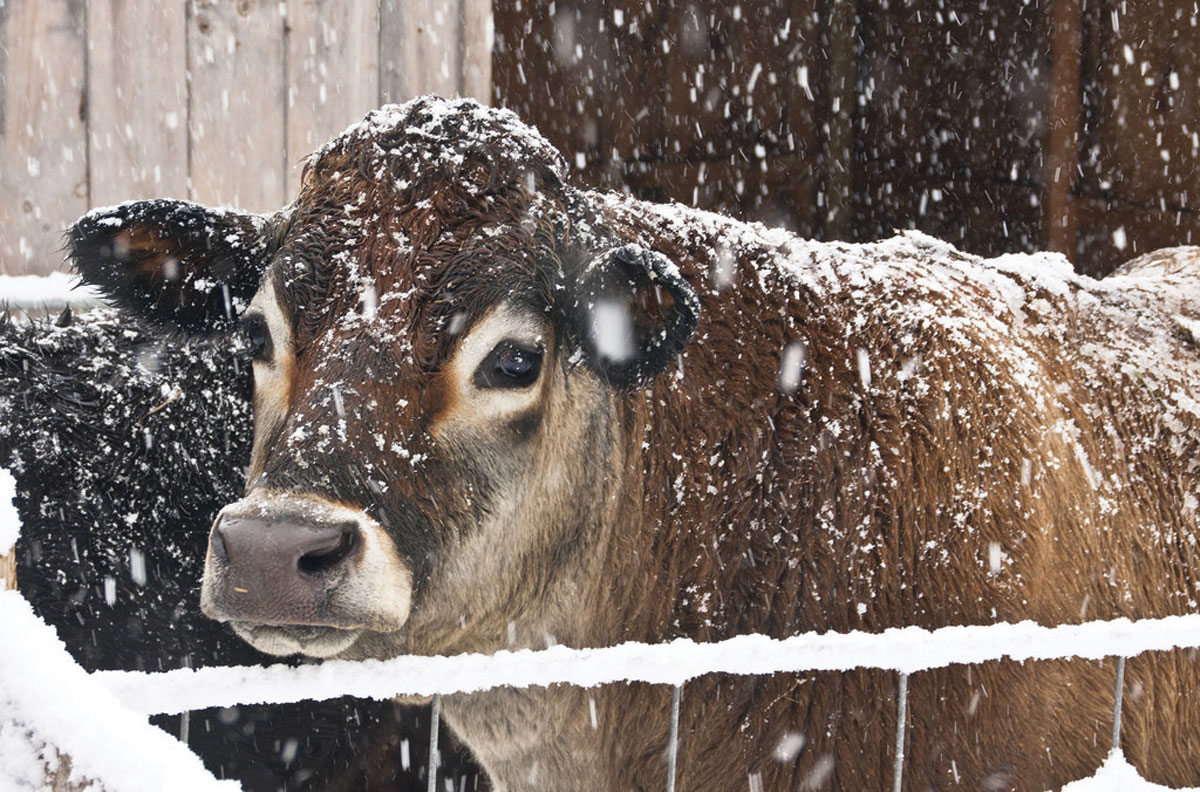
How to tell how your livestock is faring in the winter months
This winter has been a bit of an arctic blast compared to the past few years. While we know Old Man Winter is going to come calling at our farms eventually, the changes can still be a bit of a shock when they arrive – especially for livestock.
Ozarks Farm and Neighbor checked in with some experts to see how to detect signs of cold stress.
Cattle
“Detecting cold stress symptoms in cattle probably can be as simple as observing how they act when you’re feeding and observing them each day,” said Eldon Cole, livestock specialist with the University of Missouri Extension. “Do they come running when the truck drives in the gate? Do they start eating or do they hang back and act lethargic?”
He also noted that “severe cold will cause cattle to actually shiver and stand around humped up,” where as cattle that are handling colder temperatures without many problems can be seen licking and grooming to warm themselves. Monitoring the weights of your animals during the cold season is also an indicator of cold stress.
“If the cold stress is prolonged (like a week or two), simply catching a weight a couple of times would provide an indication of how it’s affecting them. Short tern weights are sometimes of limited value but if you take them two or three weeks apart with a comparable fill, they can help monitor stress effects,” Cole said.
Sheep and Goats
Since many producers encourage these animals (especially goats) to stay in a cozy barn during the winter, everyone needs to be on the lookout for external parasites (lice) that grow in that kind of environment and can cause stress and health problems. “Examine animals and treat for internal and external parasites as needed. Lice are very common in cold, damp, dark conditions; their numbers can grow to the point that individual or even whole-herd health is affected,” said Jodie Pennington, small ruminant educator with Lincoln University in the Newton County (Mo.) Extension.
Sheep and goats that are handling the cold well will venture out of the barn, even during temperature lows that humans find quite uncomfortable.
“Do not worry,” said David Fernandez, Cooperative Extension Program Livestock Specialist at the University of Arkansas at Pine Bluff. “As long as the weather is dry and not too windy, animals will probably prefer to be outside allowing the sun to warm them. If they get too cold, they will go to the shelter on their own.”
He added that “sheep and goats are hardy animals and do not require as much shelter as many new producers believe.”
Pigs
With pigs, many producers say that a sure sign of cold stress is when you observe a “pig pile.”
Cold pigs will sleep on top of one another to stay warm if necessary, which can result in devastating losses if a young pig or smaller breeder gets crushed. While pigs need appropriate winter shelter, it’s also important to make sure your barn doesn’t consist of dank, moist conditions from too little airflow.
“In the winter, provide warm, dry, draft-free quarters with plenty of bedding and supplemental heat if necessary,” advised William G. Luce, Extension Swine Specialist with the University of Oklahoma.
Poultry
If poultry are suffering from cold stress, especially wind related, it will often show up on their combs and wattles.
“A basic rule in cold weather is to give birds protection from the wind. Combs and wattles freeze easily in high winds but survive at temperatures well below freezing when air is calm,” explained R. Scott Beyer, poultry specialist with the Kansas State University Extension. The shelter must also be as free of moisture as possible. “Give birds a place to stay dry,” advised Beyer. “Feathers only retain body heat when dry. When birds are unable to escape wet and windy conditions, they are less likely to survive winter.”





